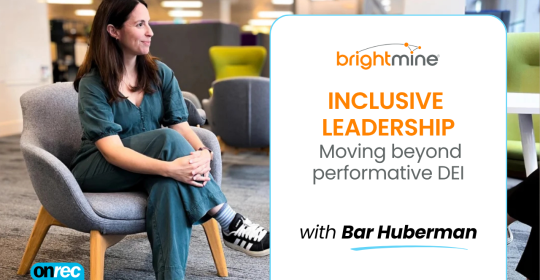The way the recruitment process is handled says a lot about your employer brand. Keeping candidates hanging sends the wrong message.
Reaction time is a key factor when attracting top candidates. A-list applicants usually receive an offer within two weeks. But if your job application process is long and tedious, you might never get the chance.
And passive candidates need timely attention too. Leaving them in limbo while you sort through your process steps could sap their interest in the opportunity. The way the recruitment process is handled says a lot about your business.
Candidates will make judgments of their own. If you keep them in the dark it might be seen as indicative of the company’s management style. Long periods without communications could also suggest your company's culture is indecisive, slow, non-committal, or perhaps a bit rude.
The longer it takes to complete a hire, the larger the negative impact of leaving that role un-filled, and the less likely it is you’ll convince the best candidates to come onboard. So what can you do?
Optimise the application process
The job application process formally kicks off the moment an opening is recognised by the hiring team.
Day zero is crucial, as the initial discussions and design of the hiring process can have a major impact on your time-to-hire. If you start with gaps and uncertainties, slowdowns and bottlenecks will appear across the whole process.
We’re all under pressure to fill vacancies quickly, but the candidate experience has to be considered from the outset. Sometimes we put too much emphasis on what we want as a hiring organisation, forgetting that on the other side, candidates have expectations of their own. Those blind spots can affect the job application process and undermine your time to hire.
Here are some of the common missteps we see:
Lack of proper upfront planning
Devoting proper planning time to specifying the role, benchmarking the remuneration, and mapping the recruitment process is crucial. The critical skills required have to be identified and agreed, and a sensible estimate has to be made about the time needed to fill the role.
This is when you decide whether the position needs specialised skills or personality assessments, and how long reference checks could take.
The team is time-poor, under-resourced, and biased
Not every hire is the result of expansion, maternity leave, secondments or retirements. Unexpected resignations can take you by surprise and leave little time for planning.
Confirming that every member of the hiring team is available and has capacity during the recruitment process is an important practical step.
If someone on the hiring team doesn’t have time to dedicate themselves fully, they’re best left out. Offer to keep them updated instead.
Placing recruitment in the hands of the wrong team members can also seriously affect your ability to hire.
Recruitment should be treated just like a sales process, where prospective customers are treated with respect and enthusiastically shown the benefits of buying into your product or service. So why put -- and excuse us for being blunt -- uninspiring, non-PR friendly employees in charge of the recruitment process? Do they have the tools to best represent and promote the business?
You might also consider whether your team member is recruiting to their own agenda or if they genuinely have the company’s best interests at heart. Maybe they see the applicant as a threat?
Your job description isn’t accessible, targeted or realistic
Many recruiters don’t realise the importance of a well-constructed job description. Vagueness and ambiguity will result in either too few applications or masses of unsuitable ones. This justs causes delays, wasting your time and budget. Decide in detail the essential attributes a candidate needs so that you attract the most suitable.
Once you know what you want, only then can you compile a comprehensive job description ensuring your proposition and salary align with the market.
You’re not listing the role on enough channels
Sticking an advert on Indeed and waiting for your inbox to fill up is not the best strategy. Your role needs more exposure and more love to ensure its continuously bringing in new candidates who may not be in just one place.
If you’re looking to attract high-demand specialist skills, generic job boards alone won’t be enough and you need to get your role into more specialised communities.
However, don’t fall into the trap of thinking that if you spread your advertising net wide you’ll get better results. If you role isn’t specced well-enough or pays below market expectations your budget will quickly evaporate.
Your ATS is a joke
You’ve spent ages with the team choosing the right ATS provider. You’ve been wowed by analytics dashboards and collaborative features, but guess what? You’ve skipped over the most important element: the candidate application process.
How quickly can a candidate apply for a job? How many steps do they need to take? Are you getting “full-on” too soon, e.g. by asking for too much data? And please don’t say you won’t accept CVs, or that candidates need to fill out an application form. Guaranteed fail.
Lengthy and tortuous ATS application forms can be a sure-fire application killer. Asking candidates to pre-register and create detailed profiles and CVs before applying can put them off. This generation of workers expects everything they do online to have the ease and simplicity of their favourite retail site. Its common now to purchase products quickly as a Guest and then have an option to sign-up after the transaction has been completed. Think of your ATS in terms of conversions, not just data capture.
We advise working with providers like Workable, JobAdder, Comeet or even LogicMelon that enable candidates to email their applications directly into the ATS.
Make it easy!
Not tracking progress
If you don’t have an effective tracking system, following the progress of applications isn’t easy. If you have a dashboard system shared across the hiring team you can use it daily to manage the progress of your recruitment drive. Ensure that all members of the hiring team are participating to speed up the process and to avoid overlapping and loss of momentum.
Foreplay before testing. Seriously.
Expecting candidates to complete application tasks and tests before any serious engagement may cost you your Hire. The Googles, Ubers, Apples and Amazons of his world may be able to do this, but for most companies its safest to assume you should treat candidates like customers.
Talk to them first, establish a relationship, talk to them some more, meet them and only then request their participation in your exercises. At this point, if they are serious about you they’ll make the investment. Don’t forget -- you might want them more than they want you. Only test when absolutely necessary.
Your screening process is haphazard
When applications start coming in, put time aside to screen them so you can find both the best obvious candidates, and candidates who may have more to offer than their CV alone indicates.
If you identify an excellent applicant, act immediately. Don’t sit on an outstanding CV while you wait for a few more to come in or for the application closing date (which we’re not fans of). Attract and interview on a continuous basis. Remember: treat the candidate like a customer. You wouldn’t delay on a sales lead after all.
Don't discount or ditch an applicant based on personal assumptions either. Message candidates, talk to them, fact find. Being too narrow in your definition of role suitability can impede your recruitment process.
The best recruiters understand that talent acquisition takes time and the way to find the best people is to speak to as many of them as you can. Great hires have happened because the recruiter was curious, did a bit of digging, and found the candidate had more to offer than was apparent at first glance.
Not staying in touch with shortlisted candidates
Don’t assume that candidates will wait for you or know that they’re still in line for an interview. Once you’ve finalised the shortlist and started scheduling interviews, maintain daily contact with those candidates – at least those who know they’re on the list.
Leaving a candidate hanging can lead to disillusionment. Once that happens they could lose faith or express second thoughts when you finally get back to them. Then you’ll have to win them back.
Update candidates on your progress and give them time estimates of when decisions will be made. If a shortlisted candidate is eliminated, tell them straight away.
Losing them after the offer
We see too many people making candidates wait too long after offer stage. Deciding on the best candidate and offering the job is just the start. Its by no means a dead cert that they’ll immediately say yes -- or even that they’ll commence employment after accepting your offer
There may well be follow-on questions, additional asks, or a period of negotiation around remuneration, duties, and start dates. This is no different to the final stages of signing-up a new customer. Once the offer is made you have to stay in regular contact until that final signature is secured and indeed until their first day.
Constant Engagement and early-stage onboarding is crucial to ensure your superstar new candidate is not lured away.









